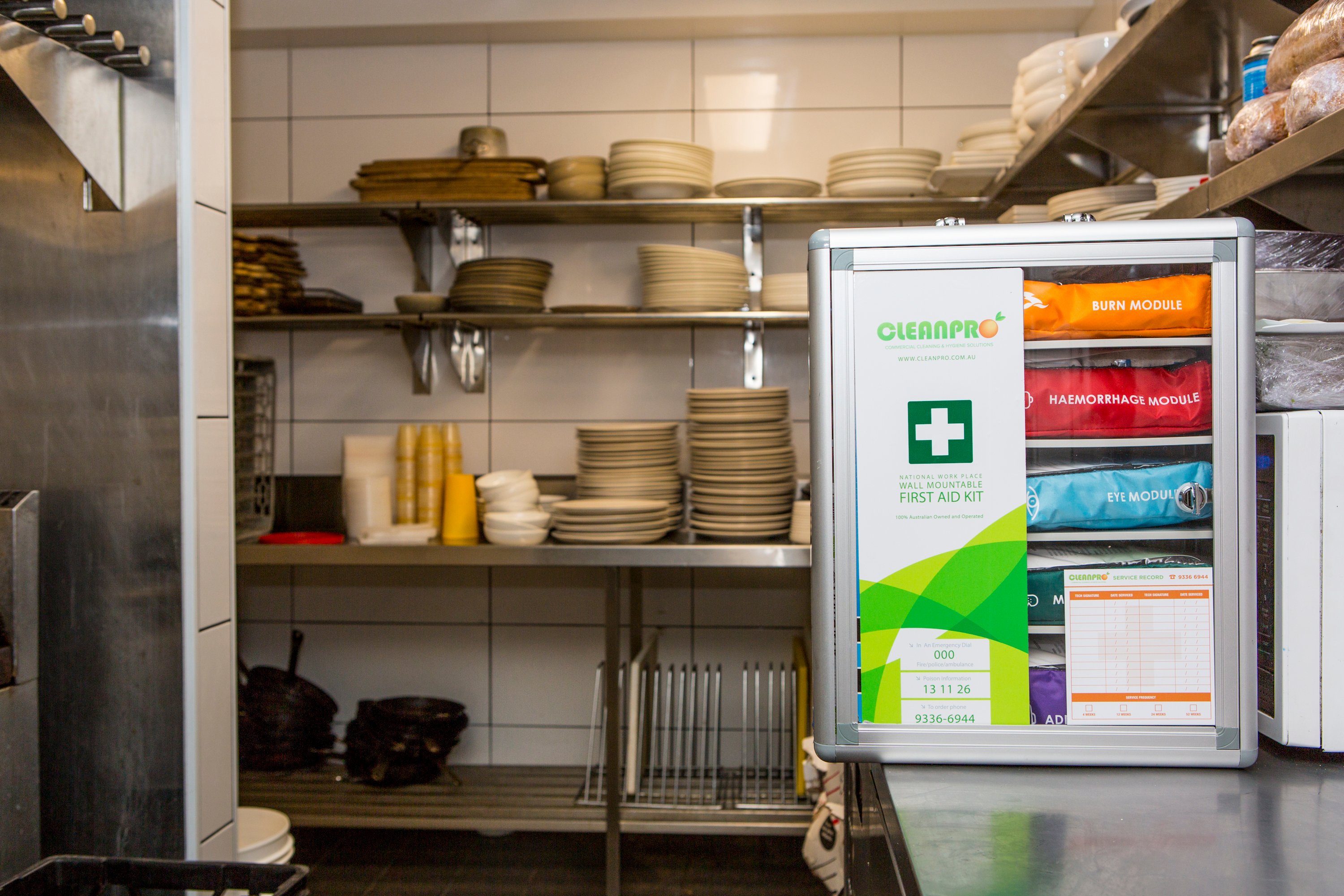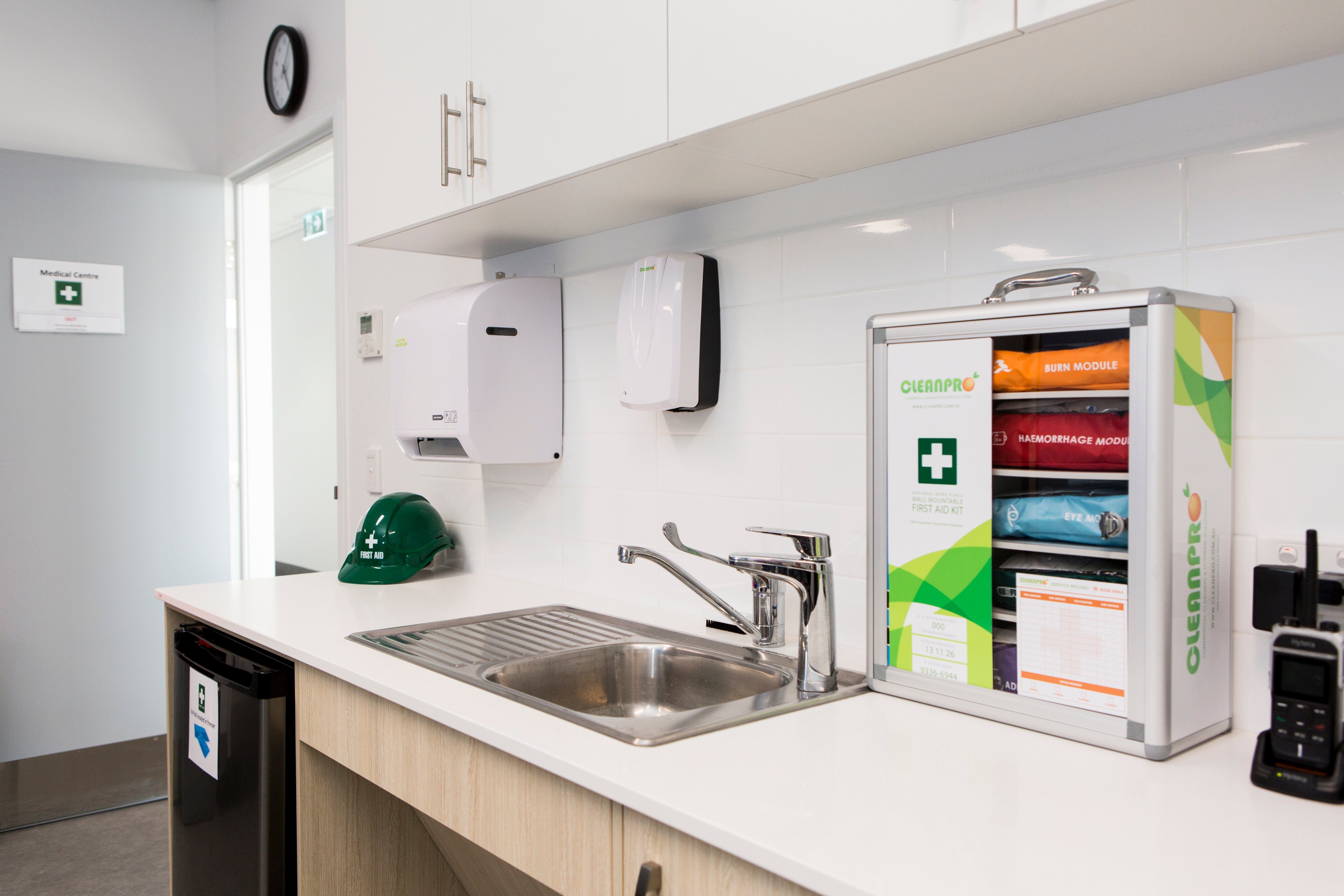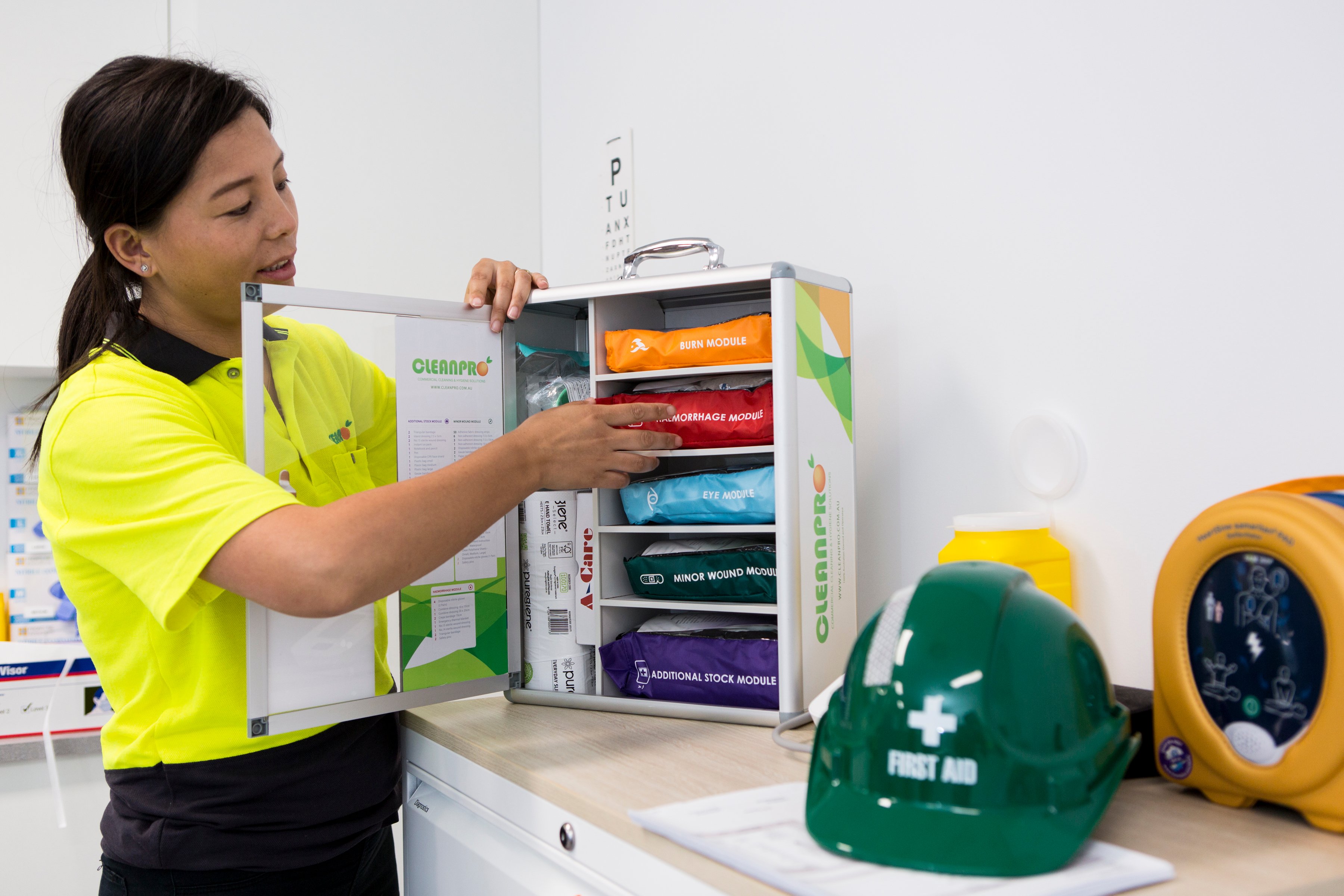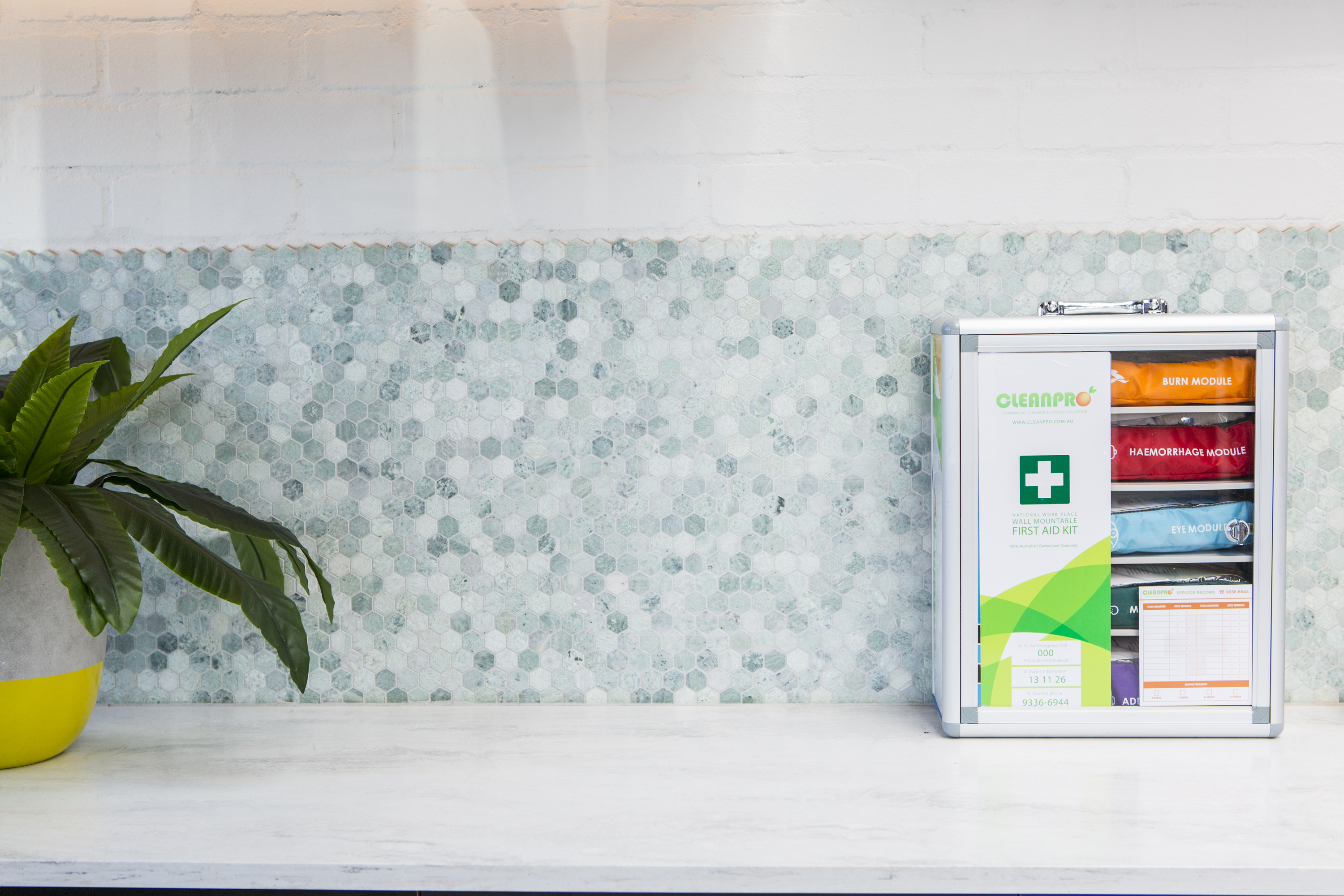First Aid Kits in the Workplace: How Many Should You Have?
Medical incidents can happen at any workplace. Whether it’s something as minor as a paper cut or a more extreme case like a workplace accident, there’s always the possibility that someone could need medical attention on the job. This is why it’s integral that your workplace is equipped with first aid kits which are ready to handle and assist with all types of medical incidents.
There’s no denying that having proper first aid kits in your workplace is a must, but should you have more than one? And what items should every first aid kit contain? Here’s what you need to know about these important resources and how many you should install in your workplace.
First Aid Kits
Equipping your workplace with a first aid kit is a step you can’t and shouldn’t escape. Whether it’s in the form of a clearly labelled box, bag or pack, a first aid kit should feature the essential materials and tools necessary for giving emergency treatment to a sick or injured individual.
Unfortunately, this indispensable requirement is often overlooked in the workplace. It’s not as simple as stocking a box with some bandages and rubbing alcohol either. A first aid kit is one of the most critical pieces of equipment for your company and should be at the top of your to-do list. After all, having an effective first aid kid can make the difference between life and death.
 Misconceptions Could Kill Your Business
Misconceptions Could Kill Your Business
When running a company, the wellbeing of your employees should be a top priority. In Australian workplaces, it is compulsory to have a first aid kit, just like it is to have a fire extinguisher and fire safety plan. However, just because legislation requires you to have at least one shouldn’t stop you from considering having multiple. Having a first aid kit prepares you for the different risks you or your employees could face and allows you to take the necessary measures needed.
The recommendations for what’s inside that kit also vary depending on your workplace. First aid kits are not one-size-fits-all and vary greatly depending on several factors; for example, an office-based organisation will obviously have different requirements to a warehouse operation.
Accepting misconceptions without doing your own research could cost you the reputation of your business, millions in fines, prison time, and the lives of your employees.
 What Actually Needs To Be Considered?
What Actually Needs To Be Considered?
So how many first aid kits are actually enough? And what should they contain? First aid requirements will vary from one workplace to the next, depending on the type of work you do, the size and layout of your workplace, and how many employees you have.
As a business owner, when considering how many first aid kits you need to provide, you have a duty and responsibility to ask yourself questions like:
- What level of risk are my employees in?
- What tasks do they have to perform?
- What tools are being used?
- What sorts of injuries are they susceptible to in the workplace?
- What sort of hazardous chemicals or materials are present?
Nature of Work and Workplace Hazards Being Carried Out in the Workplace
In the workplace, a hazard can be anything and everything that can cause harm or death. These hazards fall under one of three categories: physical, chemical or biological; each is associated with potential harm. For example, a ladder used on a construction site can be identified as a physical hazard because of its height and uneven walking surface. A potential harm associated with the ladder is falling, which could cause fractures, bruises, lacerations, dislocations or a concussion to those employees using it. The likelihood of harm is even greater if employees are using this ladder several times daily to complete work-specific jobs. Scarily enough, ladders are the leading cause of death among construction workers.
It’s important to recognise that certain work environments hold a greater risk of injury and illness due to the nature of work being carried out and the hazards present. Workers in factories, motor vehicle workshops, and forestry operations face some of the highest risks of injury, requiring immediate medical treatment. This is based on the tasks they are required to carry out and the equipment they use. On the other hand, individuals working a desk job in an office setting fare much better with minimal risk. The higher the risk and probability of injury, the more first aid kits you’ll need.
Likewise, the contents of your first aid kit depend on hazards present in the workplace. A basic first aid kit should include gauze pads, bandages, adhesive tape, antiseptic wipes, antibiotic ointment, scissors, tweezers and gloves. But that’s not the golden standard for all; they should be customised and added to accordingly. Do you think workers in a chemistry lab who frequently deal with corrosives would sustain the same level of injuries as landscapers? Not likely, and their kits should reflect that too.
Size and Location of the Workplace
Easy access to a first aid kit is vital. Your employees should not have to run around from one end of the site to another trying to find gauze for their bleeding hand. First aid kits should be kept in a clearly labelled, accessible location where they can be retrieved quickly.
The amount of first aid kits you need depends on the size and location of your workplace. Small office spaces might only require one, whereas larger facilities or warehouses will likely need several on-site. If your facility is spread over multiple floors, at least one kit should be located on every floor, with considerations for additional ones depending on how dispersed workers are and how many risks are present on the floor. Portable first aid kits should also be provided for any mobile workers while out in the field.
When choosing the contents of your first aid kits, take into consideration how far your workplace is from emergency services. Multiple first aid kits and special equipment is needed in remote workplaces as they are considered to be especially high risk. Stock up on supplies for serious burns, breathing difficulties or allergic reactions that require quick relief.
The Number of Employees
More employees means more potential injuries and more people in need of first aid. The number of first aid kits necessary for your company depends on the number of employees you have on-site at any given time. This can also include people who frequent the facility like students in a school, clients under care, or members of the public in places involving exercise, leisure or entertainment.
More foot traffic increases the likelihood of running through items in the first aid kit quicker as well. As a general guideline, every person in your workplace should be within 20-30 metres of a first aid kit in case of an emergency. Having more first aid kits per person can cut down on response time for minor injuries, which is critical for preventing serious consequences like infections and blood loss.
You should also consider the particular needs of workers who have a disability or a known health concern such as asthma or allergies. This helps determine where to centralise some kits and if more are necessary. It also provides insight into what materials need to be restocked often.
 Workplace Safety is a Full-Time Job
Workplace Safety is a Full-Time Job
Up to 95% of all injuries in the workplace are both predictable and preventable. First aid kits are not only legally required, they’re critical. Problems tend to occur when employers think they can get away with meeting bare minimum requirements set out by the law, but health and safety in the workplace are the employer’s responsibility.
When you thoroughly consider all aspects of your work environment, you may realise you actually require numerous kits and multiple variations. Not only that, but you're liable for logging all your uses and ensuring materials are up-to-date and consistently replenished. Failing to abide by the standards set out in the Work Health and Safety Act (WHS Act) could lead to up to $10 million in negligible fines, potential prison time and worse yet, the loss of someone’s life.
If staying on top of your workplace’s first aid kits is difficult with your existing workload, you can outsource your Safety and Sanitisation services to a specialised company such as Cleanpro. As a leader in the industry of medical and first aid supplies, you can rely on them to properly assess your situation and get the job done right. Not only will they properly prepare you for all potential hazards, accidents and illnesses that occur on the job, but they will also consistently maintain and restock your first aid kits. Get in touch with Cleanpro today for flexible and comprehensive first aid solutions.















